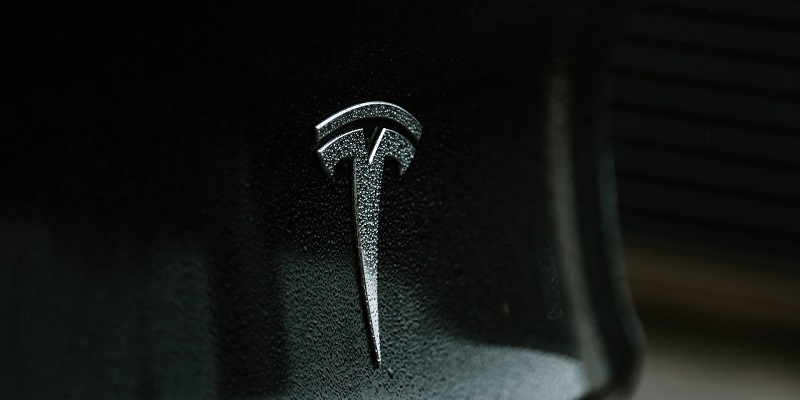As the race for autonomous vehicles heats up, Tesla is gearing up to launch a new chip for self-driving vehicles. Tesla CEO Elon Musk has promised an “order of magnitude” improvement in Tesla’s hardware, with a computer for self-driving functionality that would be “super kick-ass.” In this article, we examine Tesla’s plans for self-driving cars and ride-hailing services in 2023, competition in the autonomous vehicle market, Nvidia’s Drive AGX Orin chip and platform for Level 5 autonomy, Tesla’s production plans in China and battery modifications, and the challenges Tesla has faced beyond Model 3 production.
Tesla’s upcoming highly-capable chip for self-driving vehicles
Tesla’s new chip for self-driving vehicles has been long-awaited and promised by CEO Elon Musk. The chip is expected to offer significant improvements in self-driving functionality, enabling Tesla to stay ahead of its competitors in the autonomous vehicle market. Tesla’s current hardware, known as “Hardware 2,” is capable of “full self-driving,” according to Musk, but the company has yet to achieve full autonomy. The new chip promises to accelerate Tesla’s progress towards Level 5 autonomy, which would enable vehicles to navigate without human intervention.
Tesla’s plans for self-driving cars and ride-hailing services
Tesla plans to launch self-driving cars for ride-hailing services in 2020, subject to regulatory approval. The company is working towards having a fleet of self-driving cars that can generate revenue for ride-hailing services. However, regulatory approval is a key factor in Tesla’s plans. The company must demonstrate that its self-driving technology is safe and reliable, and complies with local regulations. Despite these obstacles, Tesla is dedicated to bringing self-driving cars to the market as soon as feasible.
Competition in the autonomous vehicle market
Tesla is not the only company working on autonomous vehicles. Its competitors are also developing self-driving cars, with some partnering with Waymo, and others going it alone. For example, Apple is reportedly developing its own autonomous vehicle, while Google’s Waymo is partnering with several automakers, including Fiat Chrysler, to develop self-driving cars. The competition in the industry is fierce, and only the best technology will win out.
Nvidia’s Drive AGX Orin chip and platform enable Level 5 autonomy
Nvidia is already supplying Tesla with its Drive AI processor, but the company recently unveiled a new AI platform with the forthcoming Drive AGX Orin chip. The new chip is intended to allow carmakers to build vehicles capable of Level 5 autonomy. It is unclear if Tesla will be using this chip or sticking with its own technology. However, competition between Nvidia and Tesla could create a competitive environment, benefiting both companies and eventually the market.
Tesla’s Production Plans for China and Battery Modifications
Tesla is currently constructing a factory in Shanghai, China, which will enable the company to produce vehicles locally. This move is expected to reduce production costs and facilitate exports to other markets. Tesla is also planning to modify its batteries to reduce the amount of cobalt they contain. Battery supplier, Contemporary Amperex Technology, predicted that cobalt-free batteries will be available within two years. This could make Tesla’s batteries more sustainable and cost-effective, putting the company ahead of the competition.
The impact of Tesla’s recent cash-raising on the company’s future goals
Tesla recently raised $2.7 billion in capital, giving the company a “longer leash,” according to Credit Suisse’s Dan Levy. This will enable the company to continue investing in research and development and expand its production capacity. However, the company will also face greater pressure to show steady profitability and drive innovation in the autonomous vehicle market.
Challenges faced by Tesla beyond Model 3 production
Tesla has faced several challenges beyond Model 3 production. These include executive departures, regulatory pressure, and a fatal Autopilot crash. The departure of key executives, including former CFO Deepak Ahuja, has raised concerns about Tesla’s ability to retain top talent. Regulatory pressure has forced Tesla to comply with local laws and regulations, leading to delays and additional costs. Finally, the fatal Autopilot crash, which occurred in March 2019, raised questions about the safety of Tesla’s self-driving technology.
The significance of competition and market position in driving innovation and development
As the market for autonomous vehicles grows, competition will become increasingly important for driving innovation and development. Whether Tesla and its rivals secure market positions will be one of the biggest stories in tech. The industry is still in its early stages, and there is a long way to go before self-driving cars are common on the roads. However, with companies like Tesla and Nvidia pushing the limits of technology, the future looks bright for self-driving vehicles.
Tesla’s upcoming chip for self-driving vehicles promises to be a game-changer in the autonomous vehicle market. The company is poised to take on its competitors and potentially secure a market position thanks to its innovative technology. However, Tesla is also facing several hurdles, including regulatory approval, production costs, and safety concerns. The competition in the autonomous vehicle market is fierce, and only the best technology will win out. Regardless, the future looks bright for Tesla and the industry as a whole as self-driving cars will likely become a reality in the near future.

